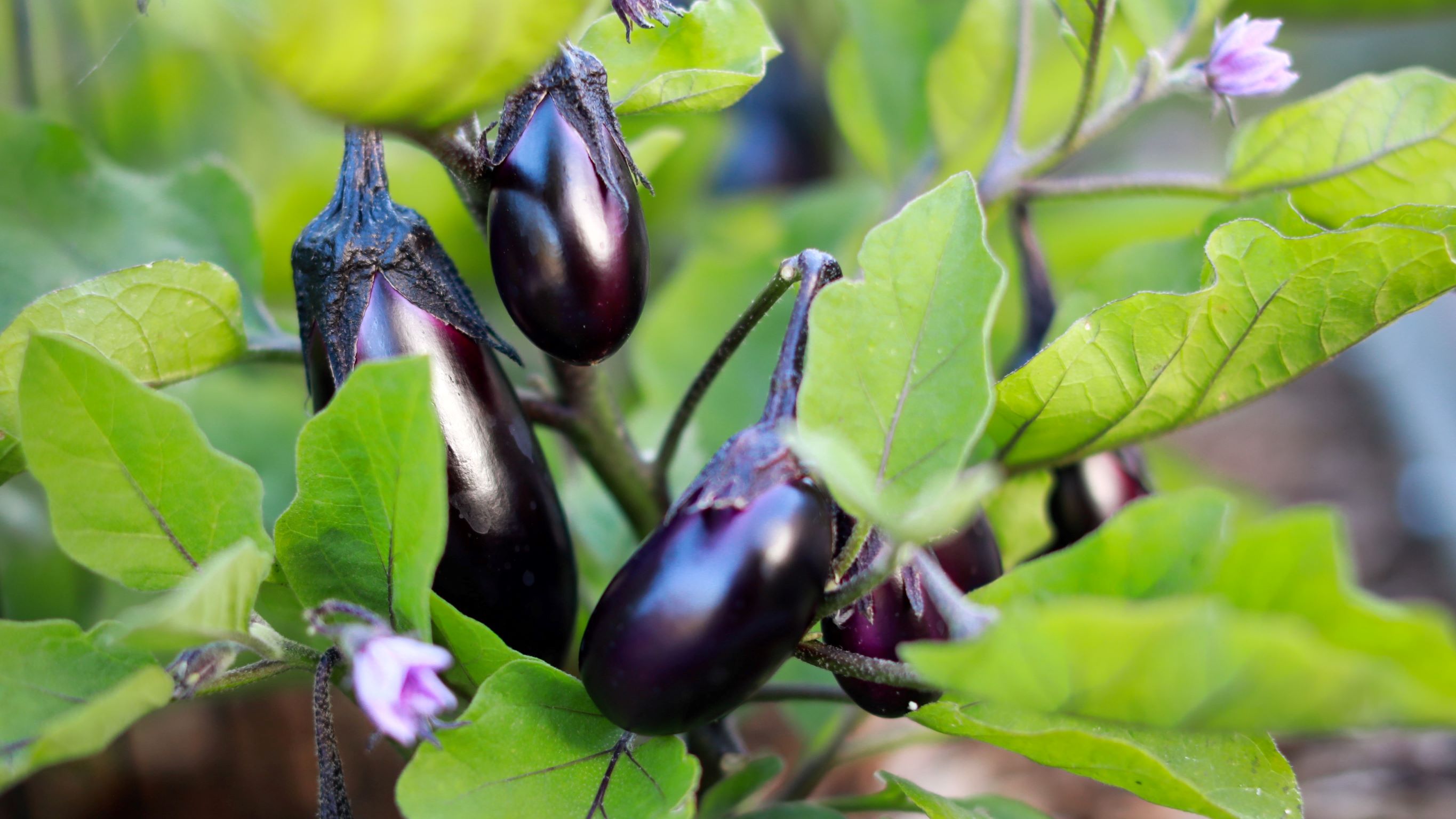Eggplant, the underrated garden vegetable. In the right conditions, eggplants produce prolifically and are not only delicious in the kitchen but are extremely versatile, starring in dishes from the Mediterranean, India, China, Japan, Thailand, Nigeria and many other cuisines.
And yet somehow, eggplants do not crack the top ten most popular foods to grow in home gardens. That is a travesty!
But it also makes sense. Because there are a handful of mistakes that are so easy to make with eggplants (many of which I have made) that result in small, unhealthy plants with no fruit or bitter fruit.
If you’ve never grown eggplants or have struggled with them in the past, you can avoid those disappointing harvests and get big bundles of eggplants by steering clear of these 5 mistakes.
If you prefer to watch instead of read, we’ve covered these same points in a video here as well:
1. Transplanting Eggplants Too Early
Eggplant Mistake #1 is transplanting the eggplant seedlings into the ground at the same time as tomatoes. Eggplants really don’t want to be in the ground until soil temperatures are above 60°F (16°C), which is a few degrees warmer than tomatoes are comfortable with.
Soil and air temperatures are not always in alignment, but wait for overnight low temperatures of 55°F (13°C) and definitely no lower than 50°F (10°C) at bare minimum (and that is pushing it!).
While it may be convenient to transplant all your nightshades into the garden together, eggplants are sensitive plants and will remain stunted from low temperatures.
The good news is that you can still start your eggplant seeds at the same time as your tomatoes as they tend to grow a little bit slower. Just give the eggplant seedlings an extra two to four weeks in a protected space even if that means transplanting them into a bigger pot an extra time.

In addition to overall vigor, there’s also another benefit to letting eggplant seedlings grow bigger in a protected spot for a little longer: the dreaded flea beetles.
Unfortunately, if you grow eggplants, you’re likely to see flea beetles eat holes in the leaves at some point. But the larger the plant, the less lasting damage they inflict.
2. Not Pruning Your Eggplants
There is good evidence that pruning your eggplants the right way will result in more, better tasting, and bigger fruit.
So mistake number three, a very common one, is not pruning your eggplants.
For the best results, prune your plants to four leaders (fruiting stems). In other words, leave the original main stem and then let two or three more branches grow out and fruit. Those extra branches can either be suckers that grow out of a main stem or a naturally occurring split in the main stem.
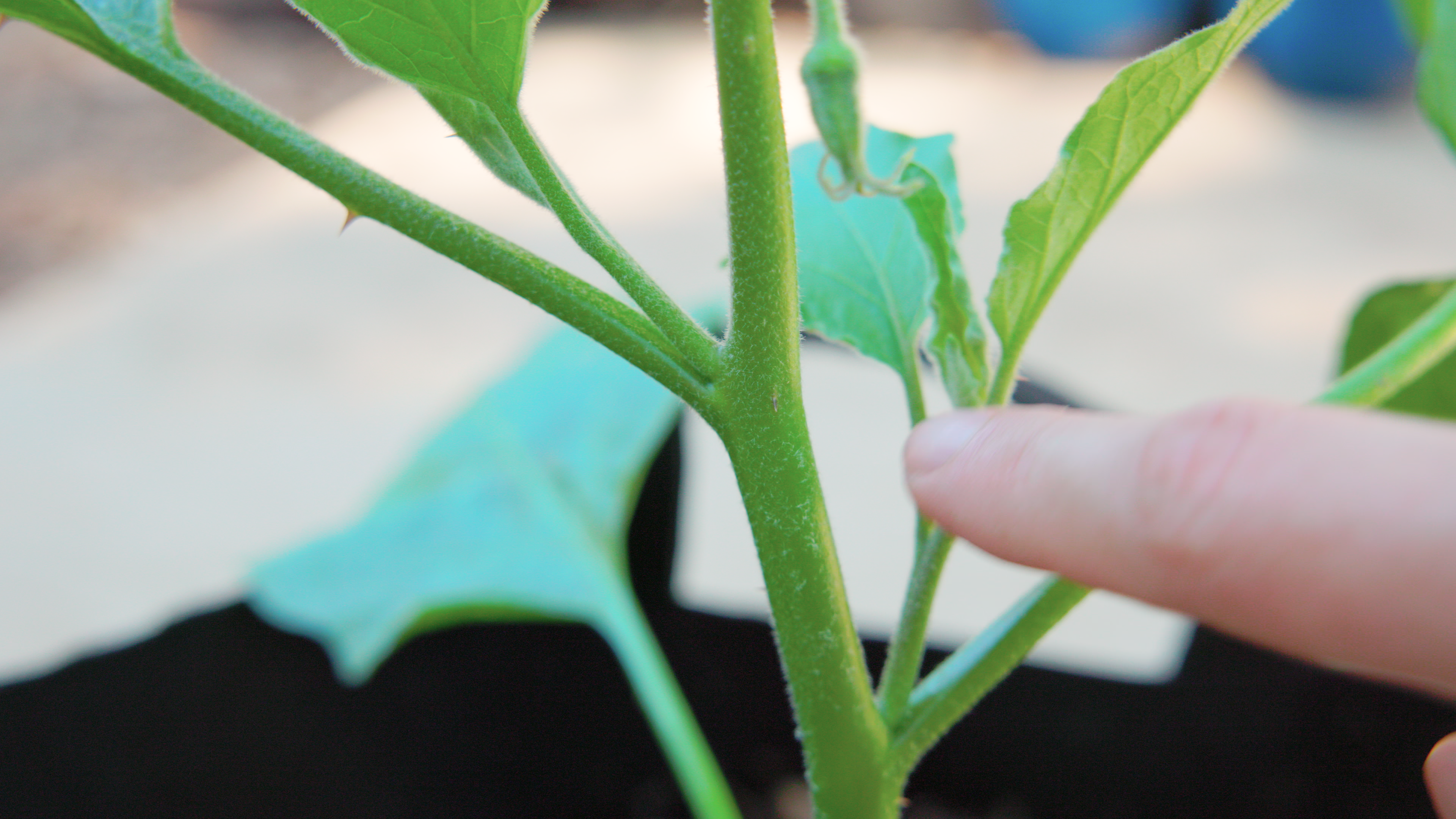
Pruning will result in more eggplants that are larger, taste better, and may have higher nutrient content. It’s worth the effort.
We made an entire video on how to properly prune eggplant you can check out here.
3. Underwatering Fruiting Eggplants
The main complaints about homegrown eggplants are that they are bitter, lack flavor, and are undersized. And the main reason all of those happen is under watering during the fruiting phase (the part of the plant’s life cycle when it has set flowers and begun producing fruit).
When eggplant seedlings are first transplanted out, the weather is generally cooler and their young roots are very shallow. Which often means that relatively little water will keep them happy.
But as the season progresses, the weather warms up, and they start making those fruits, that same amount of water will no longer support healthy growth. Even if the eggplants show no signs of underwatering and look healthy, their production and taste will be poor (read: inedible) if you do not ramp up the water.
Some eggplant growers even strategically minimize moisture early in the season to encourage the plant to grow deep roots in search of water and then majorly increase those moisture levels when pollination starts in order to support tasty fruit growth.
The amount of water your plants need depends on a wide spectrum of factors. So instead of following the standard 1 inch per week advice, it’s best to pay attention to the soil. Make sure that the soil is not drying out beneath the surface by poking the full length of your finger in to test for moisture.
In addition to the soil moisture, keep your eggplants from going bitter by looking for wilting leaves as a sign that they need more water.

A quick word of caution: As with all nightshades, make sure the soil doesn’t become waterlogged. Eggplants are susceptible to root rot if they’re left to sit in soggy soil. If you’re open to growing in a container, fabric grow bags are inexpensive and drain freely, making it easier to water the right amount.
4. Harvesting Too Late
Eggplants may be related to tomatoes, but when it comes to harvesting, think of them more like cucumbers. Rather than wilting or becoming obviously ready like a tomato, an eggplant fruit will continue growing and eventually become too bitter to eat.
To avoid bitter eggplants, watch for signs of ripeness. A ripe eggplant is still shiny and firm but has a little give to it. If it starts to appear dull and matte and soft, it’s too ripe. And if it starts to yellow, it’s definitely too ripe!
It is better to harvest too early when the fruits are small than too late when they are full of hard seeds and taste horrible. Like cucumbers, we harvest eggplants intentionally before they mature fully.
You’ll know that you picked a perfectly ripe eggplant if the flesh is creamy and the seeds are still small and soft. If the seed cavity is full and the seeds are crunchy it’s too mature and will not have great flavor.
Here’s a ripe one from our garden:
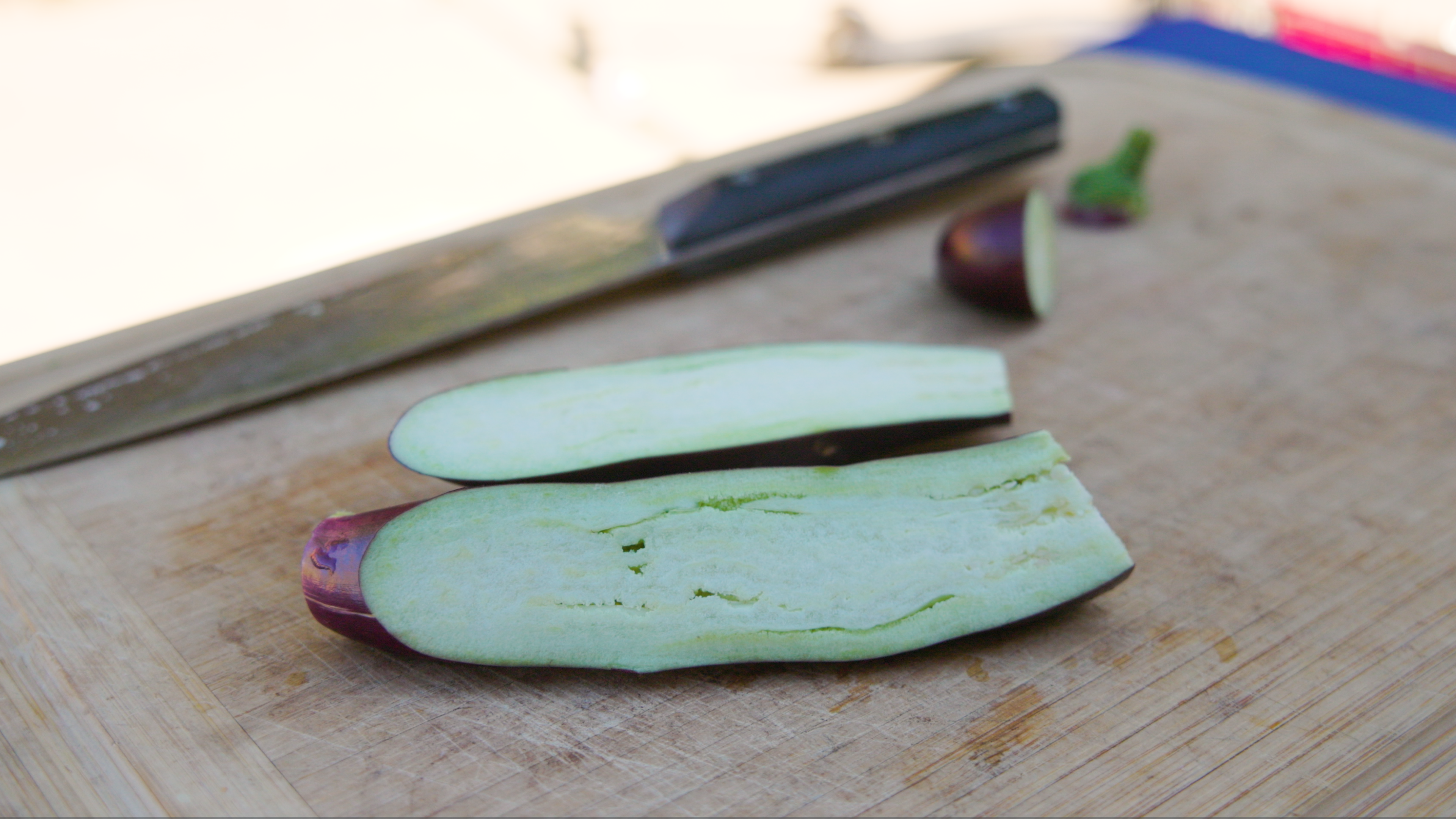
And be sure to remove those eggplants with a sharp tool, rather than harvesting by hand. Eggplant stems are tough and occasionally prickly.
5. Growing for Looks Over Production
Like many crops, modern eggplants don’t look much at all like their wild, undomesticated progenitors. Wild eggplant plants produce small, berry-sized fruit and have thorny calyxes.
They’ve been bred over centuries and across continents to thrive in different climates, produce larger fruits, taste better, look prettier, have fewer prickly bits, and for many other beneficial attributes.
And all that breeding has resulted in some seriously cool varieties!
Who doesn’t want to grow varieties like Kermit, Casper, and Fairy Tale, and Turkish Orange?
Two of my favorite eggplant varieties to grow are Casper, which of course, is a rather friendly looking ghost white eggplant. Very appropriate for Fall. And the Turkish Orange eggplant which is actually an entirely different species of eggplant!
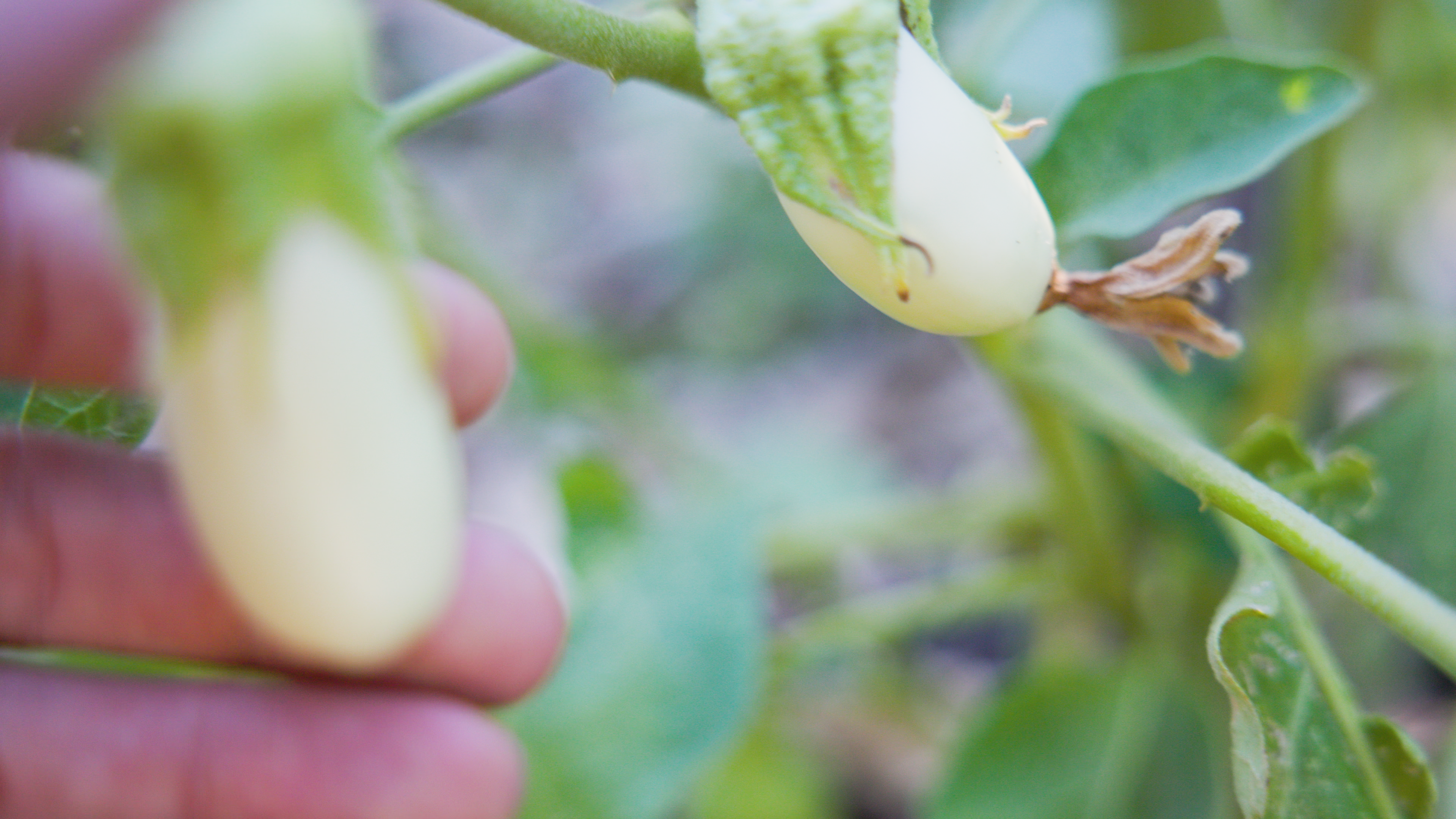
But truthfully, in my experience, these two varieties are also not very disease-resistant, heat tolerant, hardy, productive, and tend to go bitter.
So the fifth and final mistake to avoid is to start with a difficult variety because it looks cool instead of an easy-to-grow variety that will keep you excited about growing eggplants for years to come.
If you’re interested in our recommendations, the Taiwanese Ping Tung variety is a popular favorite for a reason. It produces a high volume of long pretty fruits that taste amazing in curries. And it’s an heirloom, which means you can save and regrow the seeds.
Another favorite variety called Millionaire from Japan is similarly productive, but it’s even more hardy and is one of the fastest maturing varieties out there. Perfect if you have short summers! It is a hybrid though so you’ll need to buy seeds every year.
Both are easy to grow and very forgiving of mistakes.
Bonus tip: Pollinate for 100% Fruit Set
If you find your eggplants are producing flowers but not fruit, the problem may be that the flowers are not pollinating properly.
The best way to get a better fruit set rate is actually… an electric toothbrush. Any kind will work, so no need for an expensive rechargeable one.
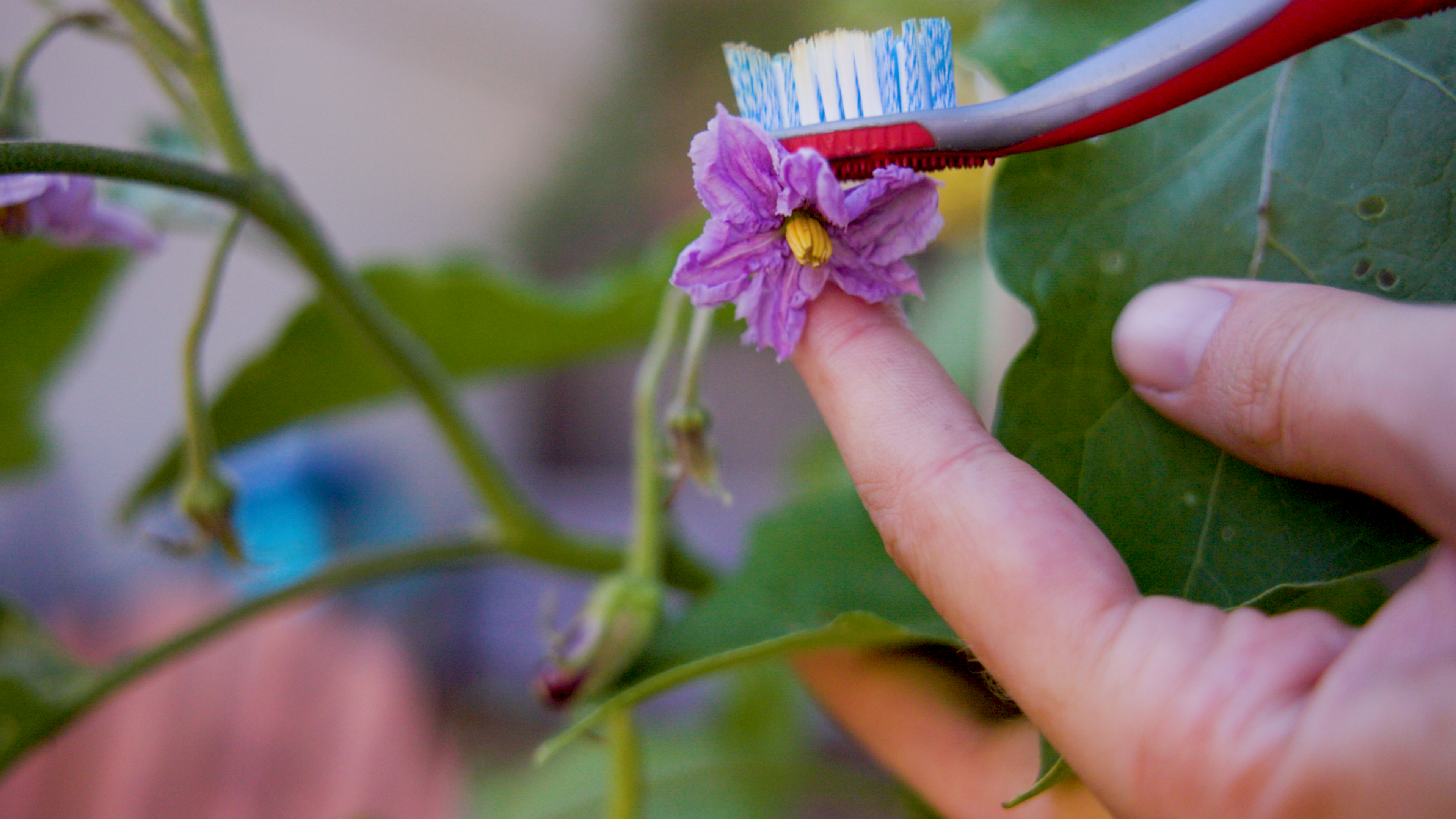
Simply turn it on and gently touch the back of newly opened flowers for a few seconds. The vibrations do an incredible job of dislodging the pollen off of the male organ onto the female (just like you would with a tomato).
Happy eggplant growing!
